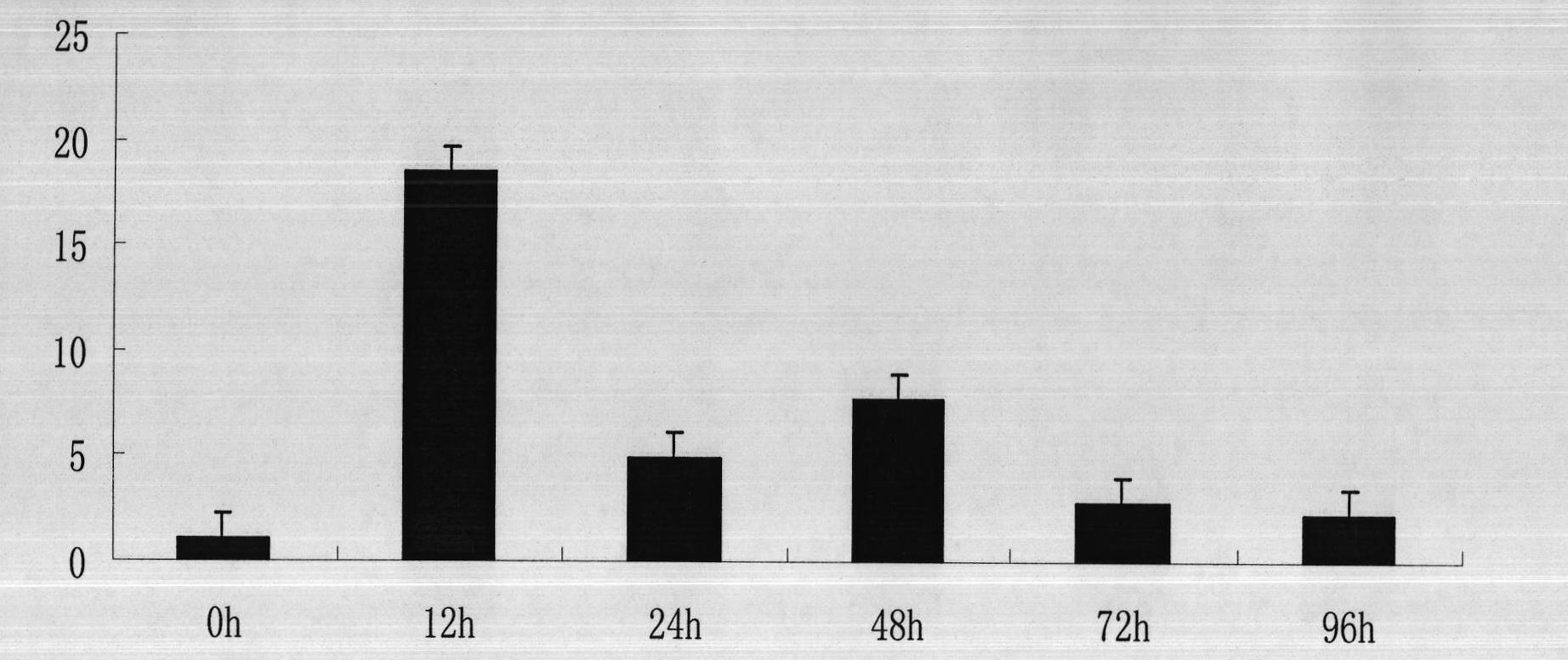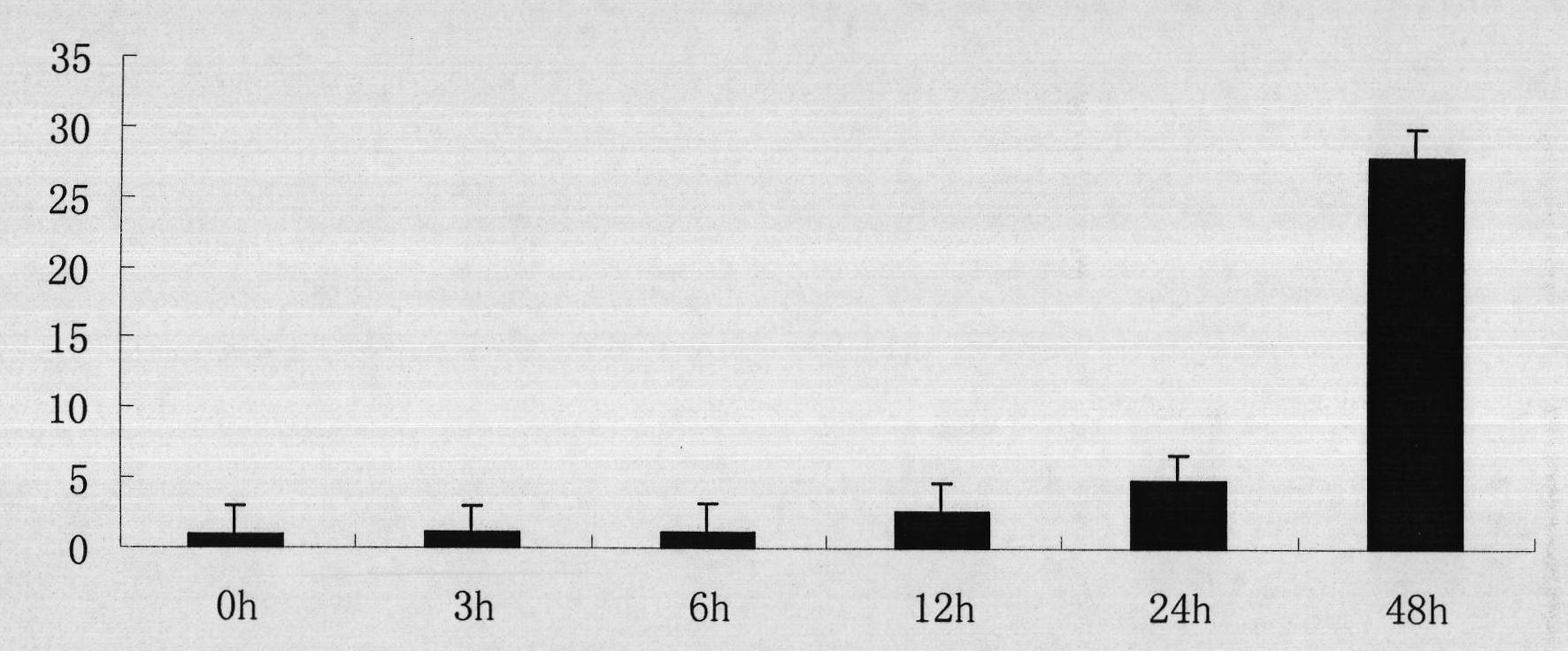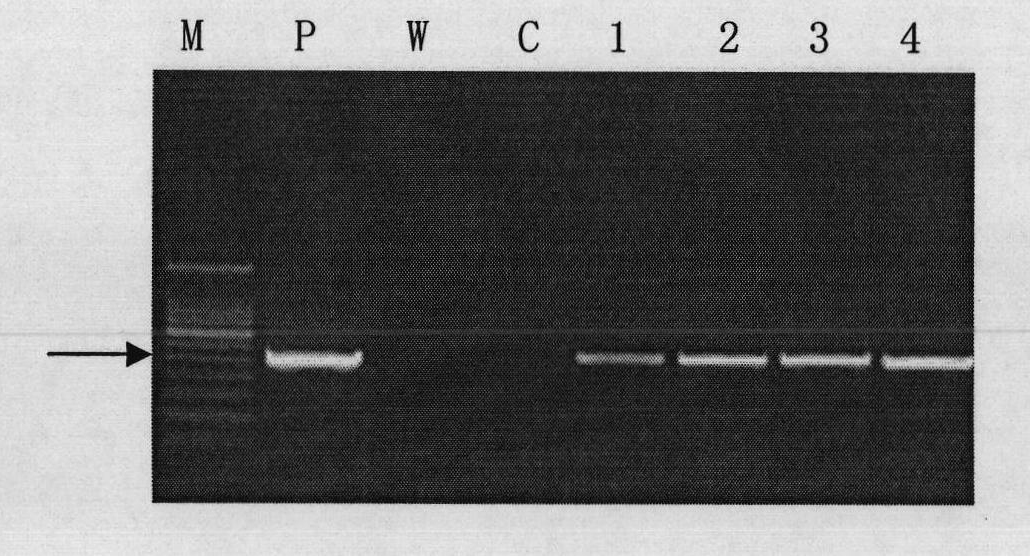Plant resistance associated protein MYB, as well as coding gene and application thereof
A technology of plant resistance and related proteins, applied in the direction of plant gene improvement, application, plant peptides, etc., can solve the problems of cloning, expression characteristics and function research that have not been reported, and achieve improved drought resistance, disease resistance and drought resistance sexual effect
- Summary
- Abstract
- Description
- Claims
- Application Information
AI Technical Summary
Problems solved by technology
Method used
Image
Examples
Embodiment 1
[0042] Example 1. Discovery of plant resistance-related protein TiMYB1 and its coding gene TiMYB1
[0043] According to the sequence of wheat TaPIMP1 gene (GenBank Accession NO.EF587267.1), a primer pair was designed: MYB-U: 5'-ACTCGCGTACGTCTTCCTGA-3' and MYB-L: 5'-GCGC TCTAGTTAAGTTCATCGTC-3'.
[0044] The leaves of the 4-5 leaf stage seedlings of Echinopsis intermedia (Z1146) inoculated with Bipolaris sorokiniana were taken, treated with liquid nitrogen, and the total RNA of the leaves was extracted according to the instructions of the Invitrogen TRIZOL Reagent total RNA extraction reagent. According to the procedures of Invitrogen's first-strand cDNA synthesis kit, the extracted RNA samples were reverse-transcribed to synthesize first-strand cDNA, which was used as a template for gene cloning. Using cDNA as a template, PCR amplification was performed with the designed primer pair; the PCR amplification system was: 1 μL of 10×GC buffer, 2 μL of cDNA (50 ng), 2 μL of 2.5 mM dN...
Embodiment 2
[0046] Example 2, Induced expression analysis of TiMYB1 gene
[0047] 1. Induced expression analysis of wheat root rot fungus
[0048] The leaves of the 4-5 stage seedlings of Thinium intermedia (Z1146) were rubbed and inoculated with the mycelium block of root rot pathogenic fungus (Helminium umbilicale), and the mycelium block of root rot pathogenic fungus was placed on the stem of Thinium intermedia. Leaf sheath; using the leaves of Thiopyrum intermedium that were not inoculated with root rot pathogenic bacteria as the control (0h), the leaves of Thinium intermedium were taken 12, 24, 48, 72, and 96 h after inoculation, and stored at -80°C after quick-freezing in liquid nitrogen. ℃ ultra-low temperature refrigerator for later use.
[0049] Total RNA (approximately 5 μg total RNA per sample) was extracted from leaves at each treatment time, and reverse-transcribed into cDNA according to the procedure of the first-strand cDNA synthesis kit from Invitrogen. The concentration...
Embodiment 3
[0059] Embodiment 3, the acquisition of transgenic wheat and identification of disease resistance
[0060] 1. Construction of recombinant expression vector
[0061] 1. Use Bipolaris sorokiniana to inoculate the leaves of Thinium intermedia (Z1146), extract RNA after 12 hours, reverse transcribe it into cDNA; use cDNA as template, and use primers composed of TiM-DF and TiM--SAR Perform PCR amplification to obtain the PCR amplification product (TiMYB1 gene carrying DarI and SacI sites).
[0062] TiM-DF: 5'-GG TTTAAA ATGGACATGGACAAGG-3' (Dar I enzyme recognition site is underlined);
[0063] TiM--SAR: 5'-TT GAGCTC GCGCTCTAGTTAAGTT-3' (SacI enzyme recognition site is underlined).
[0064] PCR reaction program: pre-denaturation at 95°C for 3min; then 95°C for 30s, 58°C for 1min, 72°C for 1min, 5 cycles; 95°C for 30s, 56°C for 1min, 72°C for 1min, 20 cycles; 95°C for 30s, 60°C 1min, 1min at 72°C, 15 cycles; finally fill in the end at 72°C for 10min.
[0065] 2. The PCR ampli...
PUM
 Login to View More
Login to View More Abstract
Description
Claims
Application Information
 Login to View More
Login to View More - R&D
- Intellectual Property
- Life Sciences
- Materials
- Tech Scout
- Unparalleled Data Quality
- Higher Quality Content
- 60% Fewer Hallucinations
Browse by: Latest US Patents, China's latest patents, Technical Efficacy Thesaurus, Application Domain, Technology Topic, Popular Technical Reports.
© 2025 PatSnap. All rights reserved.Legal|Privacy policy|Modern Slavery Act Transparency Statement|Sitemap|About US| Contact US: help@patsnap.com



